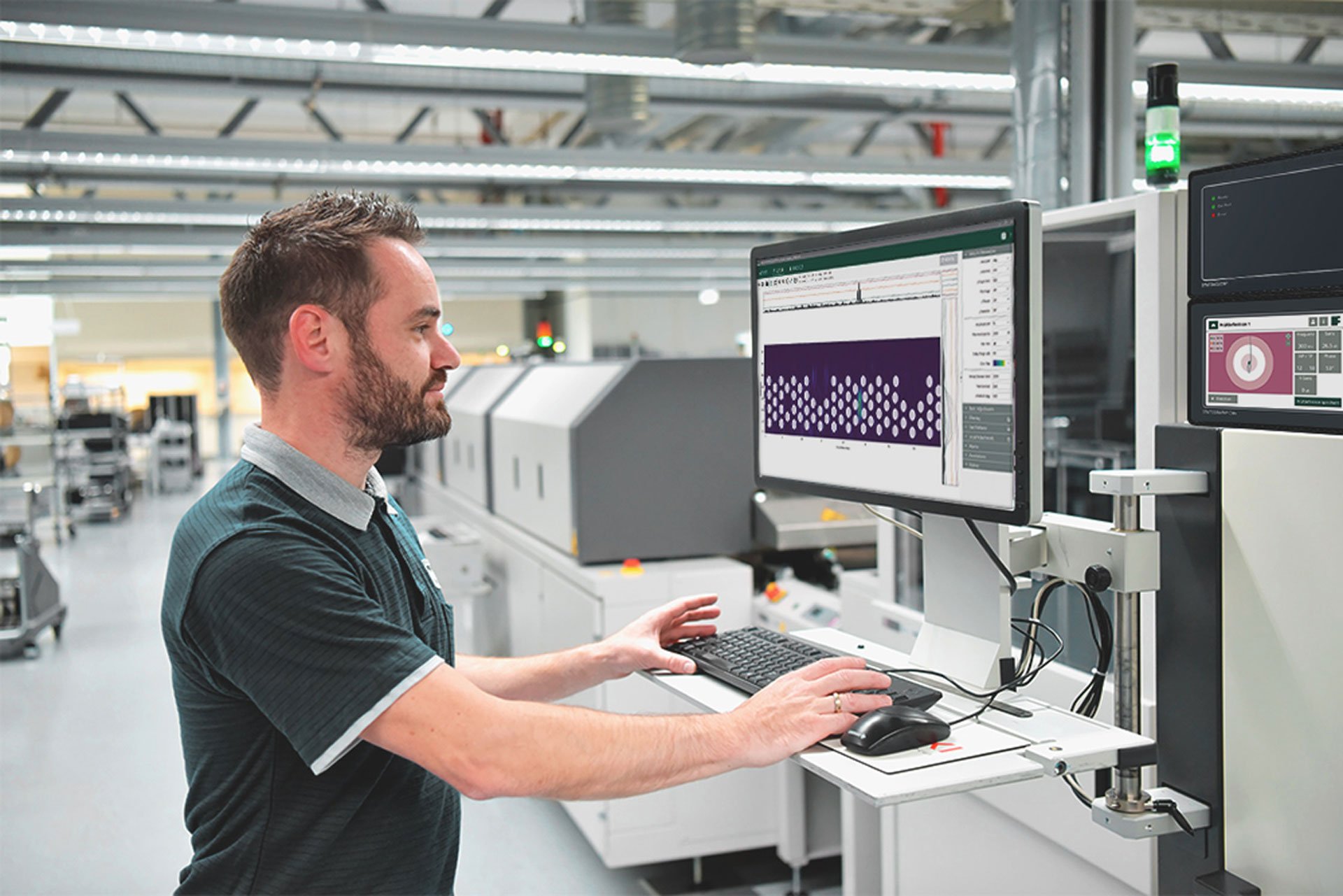Detecting Longitudinal Defects in Steel Bars
The Hidden Complexity of Steel Bars
At first glance, a steel bar appears to be a simple product. Solid, uniform, and ready to be transformed into everything from high-performance components to dependable structural steel. Yet behind that clean surface is a far more complex story. Every bar travels a long journey from molten steel to finished form, and every step of that process — steelmaking, casting, rolling, and finishing — carries the risk of hidden flaws.
Imagine a steel bar moving through a mill. On the outside, everything looks fine. Inside, however, stresses from cooling or small inclusions from the melt may have already left behind weaknesses invisible to the eye. If left unchecked, flaws can grow into serious problems during machining or in final use.
This is where eddy current testing and non-destructive testing (NDT) provide value. By testing inline during production, equipment like the CIRCOGRAPH DA helps suppliers and OEMs confirm quality before material advances to the next stage. Saving time, reducing risk, and ensuring reliability.
Types of Steel Bars and Why Quality Standards Differ
Not all bars are the same. Quality expectations vary depending on their classification and end use:
- Merchant Bar Quality (MBQ): Standard bars used for structural and fabrication work. Surface quality demands are lower, and small imperfections may be acceptable.
- Cold-Finished or Cold-Drawn Bars: Hot-rolled bars that are further processed by cold drawing, polishing, or grinding. This added work improves dimensional tolerance, straightness, and surface finish.
- Special Bar Quality (SBQ): The highest standard of bar, produced with strict requirements for cleanliness, soundness, and surface condition. SBQ bars are used in critical, high-stress applications where failure cannot be tolerated.
Think of it as a spectrum. MBQ bars perform adequately in structural applications, but cold-finished and SBQ bars become precision components, like shafts, gears, and bearings. These components endure heavy loads and long service lives, which means even the smallest defect can compromise safety and reliability.
That is why non-destructive testing is essential to ensuring that high-quality bars deliver their promise.
Why Detecting Longitudinal Defects Is Critical
Among the many flaws that can develop, longitudinal defects are the most damaging and the hardest to detect. These flaws run along the length of the bar and include:
- Seams: Linear gaps that open during rolling or deformation.
- Slivers or Laminations: Thin flakes or subsurface layers that separate under stress.
- Longitudinal Cracks: Stress fractures tied to thermal inconsistencies or inclusions.
These defects often originate early in production:
- Steelmaking issues, like trapped gas or slag inclusions, leave weak spots.
- Casting problems, such as uneven cooling, allow cracks to carry forward.
- Rolling misalignments or worn rolls scar or fold the bar surface.
- Finishing and handling introduce scratches, bends, or shear cracks.
The challenge is that these defects are often hidden. A bar can appear flawless, yet reveal weaknesses when it is heat-treated, machined, or placed under load. At that point, the damage is done.
Testing with the CIRCOGRAPH DA helps suppliers detect longitudinal defects, ensuring bars meet their classification and protect the high-value, high-risk cold-finished and SBQ categories.
The CIRCOGRAPH DA: Confidence in Every Bar
Suppliers today face an impossible balance. OEMs demand flawless material while also driving down price. The cost of poor quality is high: warranty claims, recalls, and lost contracts. But overinvesting in inefficient processes erodes profitability.
The CIRCOGRAPH DA provides a solution. It is designed specifically to detect longitudinally oriented defects in bright, cold-finished, and SBQ bars.
Key benefits include:
- Micron-level resolution: Detect defects as small as 20–50 microns.
- Short flaw suppression: Eliminate false alarms from harmless marks.
- Noise monitoring: Monitor the probe health and surface condition throughout testing.
- Advanced reporting: Export defect data, including size, type, and location, directly into plant systems for traceability.
For OEMs, CIRCOGRAPH means confidence that their components are built on solid material. For suppliers, it means protecting contracts, reputation, and bottom line.
Built for Today, Ready for Tomorrow
Many producers still rely on older CIRCOGRAPH DS systems. These analog platforms are increasingly limited by software compatibility issues and maintenance challenges. The CIRCOGRAPH DA provides a clear upgrade path:
- Windows 11 is compatible and future-proof.
- Modular digital design that is easier to service.
- Reuse of existing rotary heads, saving costs while modernizing core electronics.
With CIRCOGRAPH DA, suppliers evolve testing alongside production demands, ensuring that their investment delivers long-term value.
This is exactly why an investment in CIRCOGRAPH DA pays off. It prevents warranty risks, protects reputations, and delivers operational efficiency — helping suppliers meet OEM demands without sacrificing profitability.
Why Investing in CIRCOGRAPH DA Is Worth It
The story of a steel bar is more complex than it seems. From melt to machining, microscopic defects can slip through unnoticed. Left undetected, these flaws can create major risks for both suppliers and OEMs.
By investing in the CIRCOGRAPH DA, producers can:
- Prevent defective material from leaving the plant.
- Protect OEM relationships by meeting stringent standards.
- Reduce downtime and scrap costs with repeatable, reliable detection.
- Future-proof operations with digital, modular technology that evolves with production needs.
Confidence in every bar starts with CIRCOGRAPH DA. Invest today to prevent risk tomorrow.
Share this
You May Also Like
These Related Stories
.png)
Detecting Longitudinal Cracks in SBQ Bars with Eddy Current Testing

How artificial defects help with crack detection
